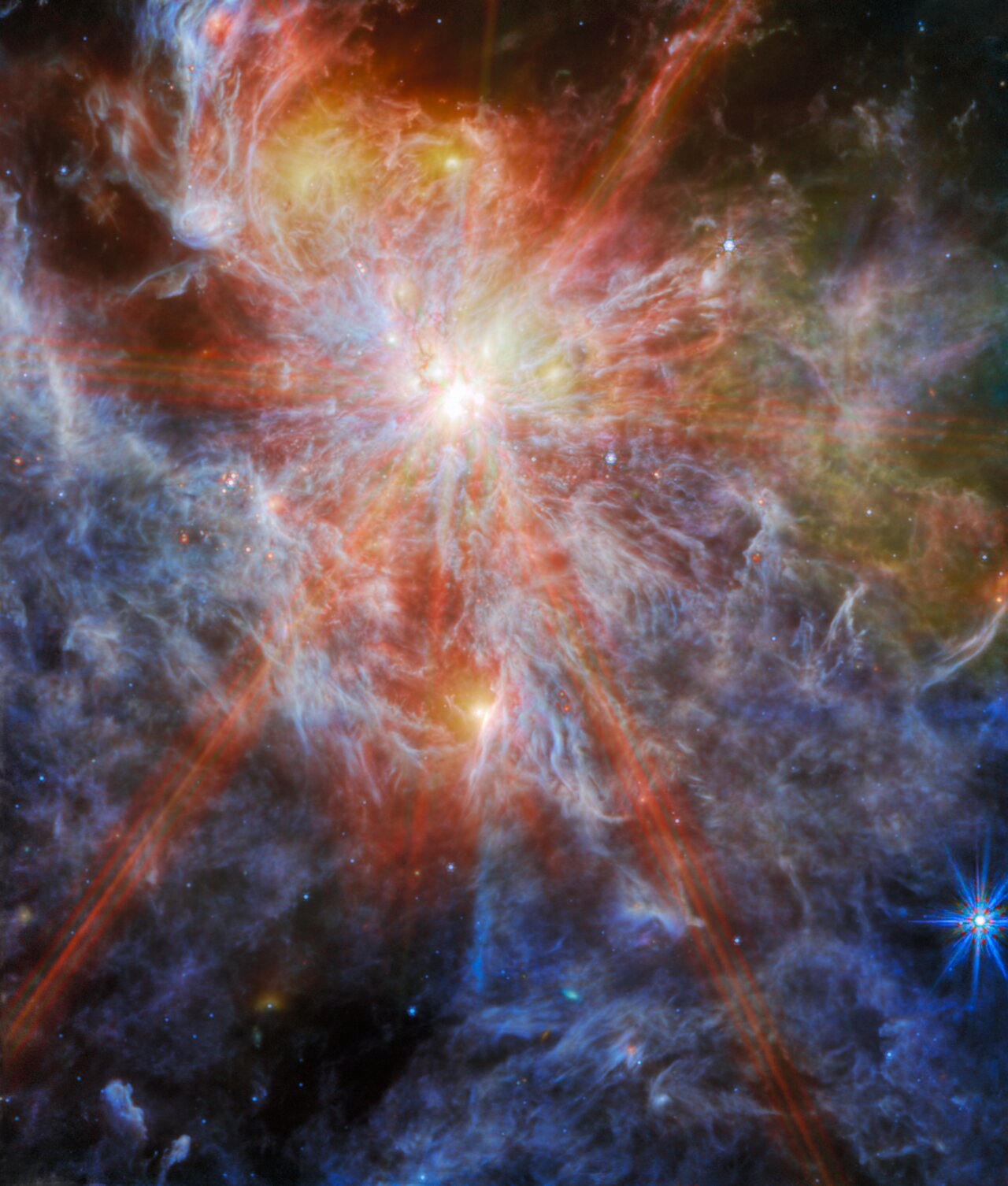James Webb Space Telescope photographs gigantic star cluster 161,000 light years away from Earth
The latest capture of the colossal N79 is a dazzling collection of colourful gas clouds and bright starburst

NASA has just released a mesmerizing image taken with the James Webb Space Telescope (JWST) capturing a massive star-forming region known as N79. Situated roughly 161,000 light years from Earth, the Large Magellanic Cloud is a satellite galaxy of our Milky Way. But although spanning more than 1,630 light years across, this colossal star-forming complex remains largely unexplored.
The JWST uses a Mid-Infra Red Instrument to capture distant galaxies in such unprecedented derail, allowing scientists to develop a better understanding of how stars form and how the universe came to be. N79 is often considered to be a younger sibling of the 30 Doradus or Tarantula Nebula and remains a steadfast fascination to astronomers due to its exceptional star formation efficiency.
• Improve your night-time photography game with one of the best telescopes for astrophotography
This latest colorful capture focuses on one of three giant molecular cloud complexes in which a humongous starbursts at the center. Gassy clouds are shown in orange, yellow and blue hues while the six large spikes appear due to the hexagon symmetry of the JWSP’s 18 primary mirror segments.
Webb's MIRI, captures longer wavelengths of light, revealing the glowing gas and dust within N79 allowing astronomers to explore and understand the inner workings of these ginormous clouds. As mis-infrared light penetrates deeper than short wavelengths, it isn't absorbed or scattered by dust grains in the region which is why this image also reveals still-embedded protostars within the region.
Star-forming regions such as this are of interest to astronomers because their chemical composition is similar to that of the gigantic star-forming regions observed when the Universe was only a few billion years old and star formation was at its peak. Star-forming regions in our Milky Way galaxy are not producing stars at the same furious rate as N79, and have a different chemical composition so these new images from the Webb telescope allow astronomers to compare and contrast start formation in N79 with that of early, distant galaxies.
As the JWSP continues to unravel mysteries of the Cosmos, it provides scientists with more information than ever before and the general republic with jaw-dropping images that show just how magical our universe is.
The best camera deals, reviews, product advice, and unmissable photography news, direct to your inbox!

Having studied Journalism and Public Relations at the University of the West of England Hannah developed a love for photography through a module on photojournalism. She specializes in Portrait, Fashion and lifestyle photography but has more recently branched out in the world of stylized product photography. Hannah spent three years working at Wex Photo Video as a Senior Sales Assistant, using her experience and knowledge of cameras to help people buy the equipment that is right for them. With eight years experience working with studio lighting, Hannah has run many successful workshops teaching people how to use different lighting setups.
